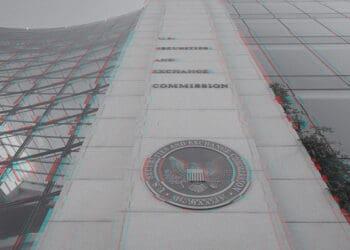Ron Kral offers an analysis of the SEC’s recent order against BorgWarner, charged for making material misstatements by failing to account for certain asbestos liabilities.
“Hindsight is 20/20” can be a profound statement when it comes to loss contingencies, as it is easy to precisely define them once they are settled over time. The statement can also be interpreted as the company should have known something would happen, or the company made a bad decision in hindsight.
In applying this concept to contingencies, the truth almost always surfaces. Of course, accounting for contingencies involves management estimates that hinge on assumptions about future events. U.S. GAAP recognizes that contingencies are estimates, and if the estimate is based on all available information known and knowable at the time the estimate is made, changes in estimates are recognized prospectively. If an estimate of a loss contingency is performed correctly, an errant management estimate will not trigger a restatement of financial statements. However, failure to correctly estimate and disclose loss contingencies can trigger a restatement.
One recent example is the SEC’s settlement of charges against BorgWarner Inc., a motor vehicle parts manufacturer (Company), for materially misstating its financial statements by failing to account for asbestos liabilities. According to the SEC’s press release, the Company failed to report over $700 million in liabilities associated with future asbestos claims in the proper period because they did not conduct substantive quantitative analysis to estimate these claims despite possessing nearly 40 years of historical raw claims data. If the data is available, or should be reasonably available, companies should not claim an inability to estimate loss contingencies.
The SEC order from August 26, 2020 concluded that as a result of the accounting error, BorgWarner’s financial statements were materially misstated, resulting in a restatement to report $703.6 million in charges to the appropriate periods from 2012 through 2016. BorgWarner also disclosed that its internal control over financial reporting (ICFR) were ineffective. Let’s break down the following points of the SEC’s order with my comments:
- Prior to 2016, the Company recorded liabilities for filed asbestos-related claims and noted that future claims were probable; however, the Company concluded that it could not reasonably estimate its incurred but not reported (IBNR) liability for future asbestos claims.
Comments: ASC 450-20-25-2 requires that an estimated loss contingency be accrued by a charge to income if it is “probable” that a liability had been incurred and the amount of loss can be “reasonably estimated.” The first of these two criteria was never a question in this case, so let’s focus on the second element, whether the loss could be reasonably estimated.
Like any estimate, this will require judgment. While “reasonably estimated” is not defined by U.S. GAAP, ASC 450-20-25-4 says this “is intended to prevent accrual in the financial statements of amounts so uncertain as to impair the integrity of those statements.” The next paragraph clarifies that this requirement shall not delay accrual of a loss if a single amount cannot be reasonably estimated, but rather a range of amounts suffices. To the contrary, once the first criteria of “probable loss” is met and information is available indicating an estimated range of amounts, some amount of loss has occurred and can be reasonably estimated, even if it is the low end of the range.
- The Company’s conclusion that it could not reasonably estimate IBNR claims was captured in a two-page annual memo from at least 2011 until 2014, which was authored and updated by an employee. The memo cited a number of qualitative factors that created uncertainty based on high-level assumptions that were not subject to substantive quantitative analysis, actuarial assessment or other testing.
Comments: Accounting memos are a very important form of accounting evidence to share with the auditors, especially when significant and material judgments are made. These memos should be specific and not weighed down with a lot of boilerplate language, including an excess of U.S. GAAP citations. While some U.S. GAAP citations are typically a good idea, there is no need to recite an entire ASC topic in the memo. A high page count is not the objective, but rather substance to support judgments. The fact that the BorgWarner memo was only two pages long is not the problem; rather, it was the reliance on high-level assumptions without analysis or testing to support the conclusions.
- In the years leading up to 2014, no one at the Company reviewed these annual memos.
Comments: Reviewing controls is critically important, and in this case, it could be argued that multiple people should have reviewed this memo since it included material judgments. Evidence of these reviews need to be clearly identified on the memo regarding who performed it and when. In addition, attention should be directed toward the competency of the employees authoring and reviewing the memos. In this case, do the employees have sufficient U.S. GAAP, actuarial and/or asbestos claims expertise? Substance is more important than form, meaning that getting the conclusions right with appropriate support and personnel is paramount versus simply having a nice-looking memo that is fully signed-off.
- The process of creating and updating the memos represented the Company’s only internal control around whether it could estimate its asbestos-related IBNR.
Comments: Would you really want to risk a possible restatement on a single control? Compensating controls are important for this very reason.
- Beginning in 2015, the Company “began to populate missing data fields, evaluate claims patterns and assess volatility using information from the Company’s database, which included over 100,000 claims at the time and dated back to the 1980s; and also began evaluating other companies’ public filings.”
Comments: In this age of “big data,” it is easy for companies to lose track of what they have and how it is communicated across departments to meet multiple objectives. While it is unclear if the accounting department knew of this data, they should have been aware of it in an effort to help support a reasonable loss estimate.
- The Company’s material weakness in its ICFR stemmed from its use of untested assumptions that lacked substantive quantitative analysis and did not consider industry benchmarks.
Comments: ICFR requires robust attention that sometimes can get lost in the daily grind of other activities. Industry benchmarks and internal data can and should be used to support analysis and conclusions. However, be careful to clearly define and consider the impact of assumptions rather then blindly incorporating them into an analysis. Using untested or incorrect assumptions can lead to faulty conclusions.
In conclusion, carefully and thoroughly document material accounting judgments and assumptions. Remember that the truth eventually comes out when loss contingencies are resolved. As a result, regulators, investors and other stakeholder groups will often ask, “when did management first learn of the contingency, and was it disclosed in a timely manner?”
Having the right people involved, along with robust controls, is critical in mitigating the risks of material weaknesses, restatements and adverse litigation exposure.



 Ron Kral is a partner of
Ron Kral is a partner of 










